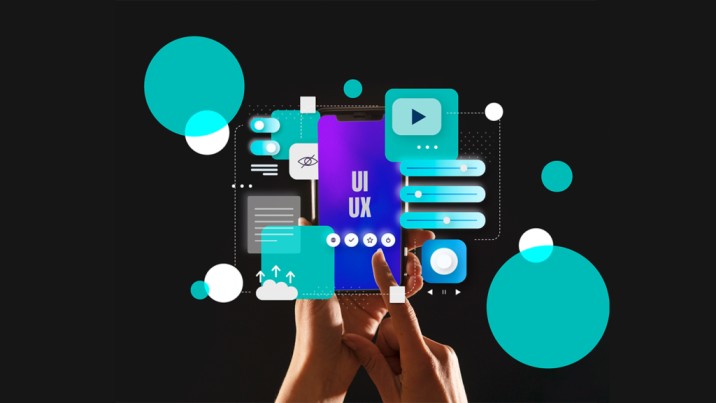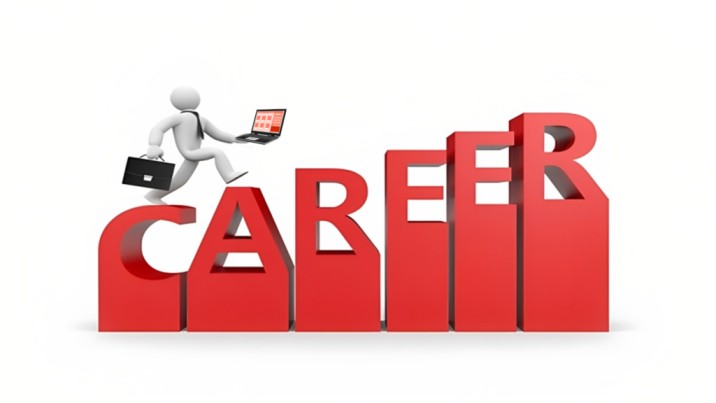
Is UX Design Stressful? Why & How To Make It Easier?
In the dynamic realm of User Experience (UX) design, a pivotal question often arises: Is UX design stressful?
Yes, UX design can be stressful due to tight deadlines, evolving technology, and the need to balance diverse demands. However, effective strategies for stress management can help designers thrive in this dynamic and rewarding field.
In this blog post, we will look into the reasons behind the stress in UX design, unravel its multifaceted aspects, and equip you with practical strategies to manage stress effectively and enhance your UX design journey by making it more enjoyable and fulfilling.
What is UX Design?
User Experience (UX) design is crafting digital and physical products, services, and interfaces with a strong focus on enhancing user satisfaction and usability. It involves understanding users’ behaviors, needs, and preferences to create intuitive, efficient, and enjoyable interactions. UX designers employ user research, prototyping, and testing methodologies to refine designs and ensure they align with user expectations iteratively.

UX design encompasses various elements, including information architecture, interaction design, visual design, and usability. Its ultimate goal is to create meaningful and seamless experiences that fulfill user goals and drive business objectives. By considering the entire user journey and applying human-centered design principles, UX design aims to create products that are functional and emotionally resonant, resulting in satisfied users and successful outcomes.
Is UX Design Stressful?
Yes, UX design can be stressful. Designers often face challenges such as tight deadlines, the pressure to balance stakeholder needs, and constantly adapting to evolving technologies. The lack of understanding of UX principles within companies can lead to frustration, and the diverse skill set required for UX/UI design can contribute to imposter syndrome. Navigating complex problems and the constant demand for improvement add to the stress.

Despite these challenges, many designers find fulfillment in overcoming them, creating user-centric experiences, and driving positive impact in the digital world. Stress is a part of the dynamic nature of the field, and those who can manage it often thrive in the fast-paced and ever-changing world of UX design.
7 Reasons That Make UX/UI Design Stressful
User Experience (UX) and User Interface (UI) design are pivotal in shaping the digital landscape and driving business success. However, these fields have challenges. From the need for a company understanding of UX principles to the pressure of tight deadlines, designers often find themselves navigating a stressful terrain. In this article, we will delve into seven reasons contributing to UX/UI design stressors.
Balancing Stakeholder Needs
Design decisions often need to strike a balance between various stakeholders, each with its priorities. This overwhelming juggling act can lead to conflicting requirements and shifting focus. The stress arises from the constant need to navigate these demands while ensuring the design remains user-centric and aligned with the company’s objectives.
Ever-Evolving Technology
The fast-paced nature of technology introduces new challenges and opportunities for designers. Designers must adapt to stay relevant as the industry embraces novel technologies and methodologies. Embracing change and learning new skills can be exciting but also a significant source of stress, particularly for seasoned designers who have to adjust to shifting paradigms.

Scam Phenomenon
The realm of UX/UI design is vast and encompasses diverse skills. Designers must possess various abilities, from user interviews to data analysis. As designers grow in proficiency, they become aware of areas where improvement is needed. This can lead to impostor syndrome, where designers compare themselves to others who excel in different aspects. The pressure to succeed intensifies, creating stress and self-doubt.
Constant Practice and Improvement
The tech landscape evolves rapidly, rendering some skills obsolete and introducing new ones. Designers might find themselves proficient in a certain aspect only to discover that the industry has moved on to newer tools and techniques. Keeping up requires substantial effort and adaptability. Accepting that mastery in every aspect is unattainable can be challenging for high-performing designers, contributing to stress.
Lack of Company Knowledge Regarding UX
The design may only sometimes be a priority for some businesses, leading to a lack of understanding of the value of UX/UI principles. Designers often have to assume the role of educators and advocates, striving to communicate the benefits of effective design and pushing for changes that enhance their work. This uphill battle can be frustrating, especially when trying to balance the shifting priorities of various stakeholders.
Constant Pressure from Short Timelines
The fast-paced nature of the industry often results in tight timelines and long hours. While some urgency is essential, perpetual pressure can lead to burnout. Knowledge work requires mental acuity, and productivity suffers when designers are exhausted or dissatisfied. The clash between the demand for quick results and the need for accuracy and efficiency adds to the stress.
Tackling Difficult Problems
UX/UI design involves deciphering complex issues that rarely straightforwardly present themselves. Problems are interconnected and multifaceted, demanding a deep understanding of how various components influence each other. Designers relish challenges, but sometimes, the more they delve into a problem, the more intricate it becomes. Untangling these intricacies can be daunting and stressful, especially when aiming to lead successful design initiatives.
How to Avoid Stress as a UX/UI Designer?
Navigating the world of User Experience (UX) and User Interface (UI) design can be demanding. Still, some strategies can help UX/UI designers mitigate stress and maintain a healthy work-life balance. Here are some key approaches to avoiding stress in this dynamic field

Set Realistic Expectations
Establish clear expectations with stakeholders and clients from the outset of a project. Ensure everyone understands the scope, timelines, and objectives. Realistic expectations can help prevent last-minute rushes and reduce the pressure to deliver under tight deadlines.
Prioritize Self-Care
Taking care of your physical and mental well-being is crucial. Allocate time for exercise, proper nutrition, and sufficient sleep. Engaging in activities outside of work that bring joy can contribute to a healthier work-life balance.
Practice Time Management
Effective time management is essential for reducing stress. Break down tasks into smaller, manageable steps and allocate time for each. Use time-tracking tools or the Pomodoro technique to stay focused and prevent burnout.
Embrace Collaboration
UX/UI design often involves teamwork. Collaborating with colleagues allows you to share insights, perspectives, and creative ideas, which can lead to more well-rounded solutions. Collaborative efforts also distribute the workload and alleviate individual stress.
Continuous Learning
Stay updated on industry trends, tools, and techniques. Regularly invest time in learning new skills and improving existing ones. This proactive approach helps you stay relevant and confident in your abilities, reducing the stress of feeling left behind.
Manage Expectations
Educate stakeholders about the iterative nature of the design. Explain that multiple rounds of feedback and revisions are a natural part of the process. Managing expectations can reduce stress caused by misunderstandings or unrealistic demands.
Practice Mindfulness
Mindfulness techniques, such as meditation and deep breathing exercises, can help you stay grounded and reduce stress. Taking short breaks to clear your mind and refocus can lead to better concentration and a calmer demeanor.
Seek Feedback Early
Engage stakeholders and users early in the design process. Gathering feedback at the initial stages helps identify potential issues and aligns the design with user needs, reducing stress caused by major revisions later on.
Set Boundaries
Establish clear boundaries between work and personal life. Avoid checking work emails during off-hours and communicate your availability to colleagues and clients. Respectful boundaries allow you to recharge and prevent burnout.
Practice Flexibility
Be open to adapting your designs based on feedback and changing requirements. Flexibility reduces resistance to change and stress associated with rigidly sticking to one approach.
Celebrate Achievements
Acknowledge your accomplishments, no matter how small. Celebrating milestones and completed tasks can boost your morale and confidence, helping to counteract stress.
Delegate When Possible
Feel free to delegate tasks when appropriate. Delegating allows you to focus on higher-level strategic decisions and prevents overwhelming yourself with many responsibilities.
Connect with Peers
Build a network of fellow UX/UI designers and participate in design communities or forums. Connecting with peers allows you to share experiences, gain insights, and find support in moments of stress.
Reflect and Learn
After completing a project, reflect on what went well and what could be improved. Learning from each experience can help refine your design process and reduce stress in future projects.
In the fast-paced UX/UI design world, stress is often inevitable. However, by implementing these strategies, you can create a healthier and more sustainable approach to your work, allowing you to excel in your career while maintaining your well-being. Remember that balance and self-care are essential to long-term success as a UX/UI designer.
Is Ux Design A Good Career & Why?
User Experience (UX) design has emerged as a highly rewarding and fulfilling career path in today’s digital age. As technology continues to shape the way we interact with the world, the demand for skilled UX designers has skyrocketed. If you’re contemplating a career in UX design, here are seven compelling reasons why it can be a great choice:

High Demand and Job Opportunities
The digital landscape is expanding exponentially, and businesses across industries recognize UX design’s pivotal role in creating exceptional user experiences. This has led to a surge in demand for UX designers, offering many job opportunities across various sectors, including tech, e-commerce, healthcare, finance, and more.
Meaningful Impact
UX designers can shape how people interact with technology and enhance their daily lives. Creating intuitive interfaces and seamless interactions can directly impact user satisfaction, usability, and overall well-being. Designing products that solve real-world problems can be deeply gratifying.
Diverse Skill Set
UX design encompasses a broad spectrum of skills, from user research and information architecture to interaction design and usability testing. This diversity allows you to constantly learn and evolve, keeping your work engaging and dynamic. As technology advances, your skill set can also adapt to stay relevant.
Creativity and Innovation
UX design is a blend of creativity and problem-solving. It challenges you to think outside the box and develop innovative solutions to design challenges. Whether crafting a novel user flow or inventing a unique interaction pattern, your creative input is crucial to shaping the digital experiences of the future.
Collaborative Environment
UX designers often collaborate with multidisciplinary teams, including developers, product managers, marketers, and more. This collaborative atmosphere fosters a rich exchange of ideas and perspectives, allowing you to refine your designs through collective input and ultimately deliver better results.
Continuous Learning and Growth
Technology is constantly evolving, and so is the field of UX design. This means you’ll always have opportunities to learn new tools, techniques, and methodologies. Continuous learning not only keeps your skills up-to-date but also keeps your work fresh and exciting.
Competitive Compensation
The demand for skilled UX designers has led to competitive compensation packages. As your experience and expertise grow, so does your earning potential. This financial stability can provide security and reward for your hard work and dedication.
Is UX design harder than coding?
Comparing the difficulty of User Experience (UX) design and coding is akin to comparing apples and oranges, as they are distinct yet interconnected aspects of the digital world. Both fields require different skill sets and approaches.
UX design focuses on understanding user behavior, crafting intuitive interfaces, and enhancing overall user satisfaction. It involves extensive research, empathy, creativity, and problem-solving. Designers must consider psychological, emotional, and cognitive factors, making UX design complex and multifaceted.
On the other hand, coding involves translating design concepts into functional digital solutions. It requires logic, precision, and attention to detail. Coding demands a deep understanding of programming languages, algorithms, and software architecture.
The perceived difficulty depends on individual strengths, interests, and prior experience. Some may find the creative aspects of UX design challenging, while others might need help with the technical intricacies of coding. It’s worth noting that many successful professionals excel in both fields, recognizing their interdependence in creating seamless and impactful digital experiences.
In essence, UX design and coding are distinct but complementary disciplines with challenges and rewards. The difficulty comparison depends on your aptitude, perspective, and the specific aspects of each field that resonate with you.
Is Ux Design Dying?
No, User Experience (UX) design is not dying. While the field of UX design is evolving and undergoing changes, it still needs to become obsolete. The importance of UX design is growing as technology continues to shape our interactions with digital products and services.
The evolving nature of technology and user preferences means that UX design is adapting to new platforms, devices, and user behaviors. As technology advances, the role of UX designers is to ensure that digital experiences remain user-centric, intuitive, and meaningful.
Rather than fading away, UX design is shifting and expanding. It now encompasses a broader scope, including voice interfaces, virtual, augmented reality, and more. The focus remains on creating seamless and enjoyable user interactions, even as the context evolves.
In that case, should we stop caring about user experience design? No way, no how. It’s changing, sure, but it’s not going away soon. As long as technology is a part of our lives, the need for UX design will persist, albeit in different forms and applications. Adapting to these changes and crafting exceptional user experiences will remain crucial for designers in the digital age.
FAQ
Is UX design a stressful career choice?
Yes, UX design can be stressful due to tight deadlines, balancing stakeholder demands, and the constant evolution of technology and user preferences. However, effective stress management strategies can help mitigate these challenges.
What contributes to the stress in UX design?
Stress in UX design can arise from high expectations for quality and speed, the complexity of problem-solving, imposter syndrome, and the pressure to continuously learn and adapt to changing technologies.
How do tight timelines impact UX designers?
Tight timelines can increase stress levels as designers strive to meet project deadlines while maintaining design quality. Effective time management, clear communication, and prioritization can help manage this stress.
What is imposter syndrome in UX design?
Imposter syndrome refers to the feeling of inadequacy and self-doubt that some UX designers experience, especially when comparing themselves to others or dealing with diverse skill demands. Recognizing one’s strengths and seeking support can help combat this stressor.
How does problem-solving contribute to stress in UX design?
Complex design challenges require thorough problem-solving, which can be mentally taxing. Designers who delve deeper into issues might encounter unexpected complexities, adding to their stress. Embracing these challenges as growth opportunities can help manage stress.
How can UX designers manage stress effectively?
UX designers can manage stress by setting realistic expectations, practicing self-care, embracing continuous learning, seeking feedback early, and fostering a growth mindset. Collaborating with peers, celebrating achievements, and maintaining a work-life balance also manage stress.
Is the stress in UX design outweighed by its benefits?
While UX design can be stressful, the benefits, such as making a meaningful impact on user experiences, having a creative outlet, and the potential for competitive compensation, often outweigh the challenges. With proper stress management, UX designers can find fulfillment and success in their careers.
Final Discussion
The discussion around whether is UX design stressful nuanced. While the field presents challenges, from tight timelines to complex problem-solving, it’s important to recognize that stress is common in many professions. Its potential for meaningful impact, creative fulfillment, and continuous learning sets UX design apart.
Rather than viewing stress as a deterrent, it can be harnessed as a catalyst for growth. As the digital landscape evolves, UX designers who embrace stress management techniques, prioritize self-care, and foster collaboration are well-equipped to navigate the dynamic terrain of UX design, ultimately contributing to enhanced user experiences and innovative digital solutions.
Read More Similar Posts:

















































